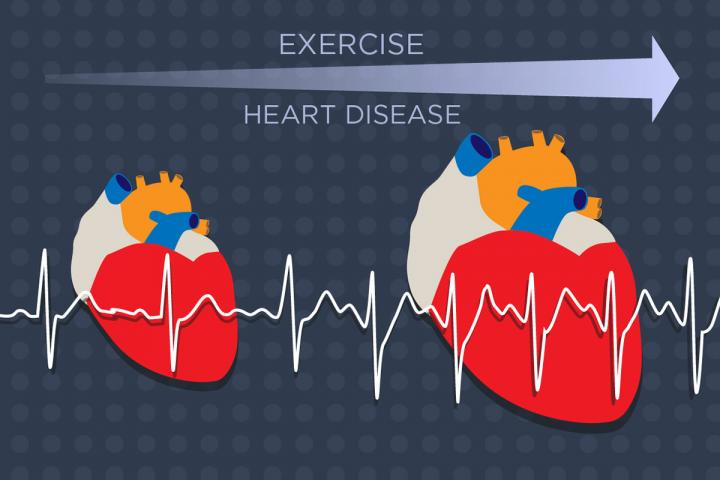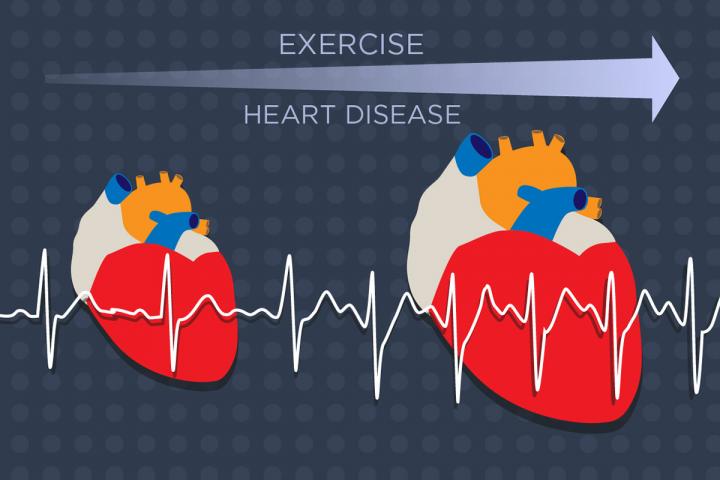
Credit: Graphic by Julie McMahon
CHAMPAIGN, Ill. — The heart is a dynamic muscle that grows and shrinks in response to stressors such as exercise and disease. The secret to its malleability lies in individual cells, which get bigger or smaller depending on the heart's needs. A new study of mouse hearts reveals a previously unknown mechanism by which heart cells control their size by ramping up or stopping the production of a key factor called PABPC1.
The findings, reported in the journal eLife, could assist in the development of therapeutics that promote healthy heart growth and prevent disease.
During exercise, the heart beats harder to pump oxygen to the muscles, and heart cells adapt over time by boosting production of specific proteins to increase in size, said University of Illinois biochemistry professor Auinash Kalsotra, who led the new study with postdoctoral researcher Sandip Chorghade and graduate student Joseph Seimetz. After a prolonged period without exercise, the heart cells return to a normal size, Kalsotra said.
"Heart cells also grow during cardiovascular disease – again requiring greater amounts of new protein synthesis to support the growth," he said. "However, even though this is initially a protective response, this prolonged growth leads to further complications that can eventually lead to heart failure."
In the new study, the researchers focused on PABPC1, a protein that binds to RNA and aids in the process of translating the RNA into proteins. Scientists had long assumed all cells needed PABPC1 to survive and make new proteins. The new study challenges this assumption.
Even though PABPC1 RNA is present in all human and mouse cells, the protein itself is absent in the adult heart, Kalsotra and his colleagues discovered.
"Our study revealed that the protein disappears in adult heart cells, reappearing only when the cells need to grow during exercise and disease," Kalsotra said.
"The finding explains why heart cells produce much lower levels of new proteins than other tissues in the body, a fact that was known but not understood until now," Seimetz said.
"Maintaining a heartbeat takes an enormous amount of energy. Because of this, heart cells need to be more efficient at making proteins," Seimetz said. "However, during growth, when cells need to make extra proteins, they turn on the PABPC1 switch to give protein production a boost."
"The finding that PABPC1 is usually not present in adult heart cells until needed for growth suggests that if you could control the function of this protein, then you could promote healthy growth and prevent disease," said Kalsotra, who also is affiliated with the Carl R. Woese Institute for Genomic Biology at Illinois.
###
The National Institutes of Health supported this research.
Editor's notes:
To reach Auinash Kalsotra, call 217-300-7654; email [email protected].
The paper "Poly(A) tail length regulates PABPC1 expression and tunes translation during heart development and cardiac hypertrophy" is available online.
To reach Auinash Kalsotra, call 217-300-7654; email [email protected].
The paper "Poly(A) tail length regulates PABPC1 expression and tunes translation during heart development and cardiac hypertrophy" is available online or from the U. of I. School of Molecular and Cellular Biology.
Media Contact
Steph Adams
[email protected]
217-333-2032
@NewsAtIllinois
http://www.illinois.edu
Original Source
https://news.illinois.edu/blog/view/6367/524152 http://dx.doi.org/10.7554/eLife.24139
############
Story Source: Materials provided by Scienmag





